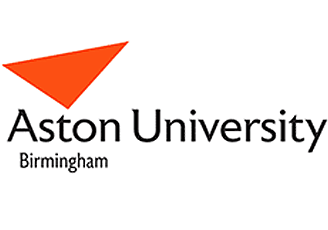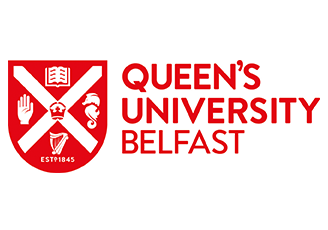Publication
Adoption of new technologies and organisational practices: are there innovation benefits?
Published: 16 October 2018
ERC SOTA No 7
Authors
Associated Themes
-
 Management and Leadership
Management and Leadership
In increasingly competitive environments, the ability to innovate successfully is a key corporate capability, and depends on the wide-ranging, complex decisions faced by firms in their day-to-day operations. International studies report innovation returns from the adoption of advanced manufacturing technologies (AMTs), although these returns may be lagged due to initial disruption effects. Likewise, work practices such as innovation strategies, innovation culture and leadership, team-working and multi-functionality are important for innovation. In addition, adoption decisions are not necessarily made in isolation, and there is evidence of higher innovation returns when adoption decisions are made simultaneously.
Individual business surveys rarely consider all three areas (innovation; technology adoption; work practices), therefore we know little about the importance of organisational culture as a pre-condition for the technology adoption–innovation relationship. In addition, longitudinal or panel data is necessary to investigate possible lags to any cause-and-effect relationships.
Downloads
Related publications
Do more inclusive workplaces lead to more innovation? Evidence from survey data for firms in England
ERC Research report
Published: 25 January 2024
More than resilience: Views of Northern Ireland SMEs towards environmental and social impact
ERC Research report
Published: 10 July 2023
The State of Small Business Britain 2022: From Crisis to Crisis
ERC Research Report
Published: 20 December 2022
Taking Small Steps: Business Priorities, Environmental and Social Responsibility in UK SMEs
ERC Research Report
Published: 28 July 2022
Interesting links
Here are some interesting links for you! Enjoy your stay :)Pages
- Competition, local growth and productivity
- ERC 10th Anniversary dinner
- ERC Newsletter Archive
- How are SMEs responding to the climate emergency?
- Local knowledge innovation, exporting and productivity
- Measuring the gap – Measuring diffusion
- Overview
- Press Releases
- Report Back – The State of Small Business Britain Conference 2014
- The Irish Innovation Panel (IIP)
- Funders
- Global Entrepreneurship Monitor ( GEM )
- Growth Drivers Evidence Review
- Investing for the future?
- Rapid Evidence Assessment Papers
- The UK Longitudinal Small Business Survey
- All Publications
- Business Structure Database
- Investment, non-borrowing and place.
- Partners
- SME-University links and their innovation and productivity benefits
- Themes
- Community Innovation Survey (CIS)
- Do firms with an aspiration to expand into international markets find finance more difficult to access?
- Innovation growth and productivity in SMEs
- Annual Business Survey (ABS)
- Growth heroes and the wider economy
- Knowledge to money
- Other ESRC Projects
- People
- ERC Videos
- Press Coverage
- Strategies for radical & incremental innovation
- L&M capabilities – levering external assets for growth
- Team size and entrepreneurial ambition in the UK
- ERC Infographics
- Privacy Policy
- Productivity and internationalisation in SMEs
- Understanding local productivity disparities
- ERC Presentations
- Finance barriers to growth and productivity
- Learning from the best in each sector
- ‘Micro-business Britain’ Research
- An exploratory study linking SME data to the Science Base
- Knowledge diffusion in supply chains
- Firm Heterogeneity and Local Job Growth
- Finance And Investment
- Measuring the spillovers from publicly funded R&D activity
- Aston Centre for Growth ( ACfG)
- Building Better Business Resilience – JPMorgan Chase Foundation
- City Of Culture
- City REDI
- Coventry City Of Culture
- Economic Intelligence Wales
- ESRC Mental health and well-being practices, outcomes and productivity project
- Global Entrepreneurship Monitor
- Innovation Caucus
- Innovation State of the Nation Survey
- ISBE
- Leadership and management: an activity-based perspective
- Mental Health & Productivity Pilot (MHPP)
- Midlands Engine
- Midlands Innovation
- National Innovation Centre For Rural Enterprise (NICRE)
- Productivity Institute
- The Entrepreneurs Network
- The Women’s Organisation
- WM REDI
- Accessing and using Alternative Finance
- Micro-Businesses, SMEs, Business Support and UK Productivity
- News
- Past Events
- Blog
- Datasets
- Home
- ISBE 2015 Papers and Presentations
- About
- Contact
- News
- Our Work
- A Collaborative Approach to Capacity Building (Invitation Only)
- Business Clusters in the UK (BIS)
- Business Clusters Project 2013
- Business Demographics
- Business Demographics Research
- Discouragement Project (BIS and ESRC)
- Entrepreneurial Ambition Research
- Finance and Governance Research
- Funding Group
- Innovation and Exporting (Research Activities)
- Leadership Research
- Management & Leadership Skills in UK SMEs (BIS)
- Research Findings
- Research Funders
- Research Partners
- Research Centres We Work With
- Social Benefits of Regulation (World Bank)
- Diversity and Ethnic Minorities Research
- Who We Work With
Categories
Archive
- April 2024
- March 2024
- February 2024
- January 2024
- December 2023
- November 2023
- October 2023
- September 2023
- July 2023
- June 2023
- May 2023
- April 2023
- March 2023
- February 2023
- January 2023
- December 2022
- November 2022
- October 2022
- September 2022
- July 2022
- June 2022
- May 2022
- April 2022
- March 2022
- February 2022
- January 2022
- December 2021
- November 2021
- September 2021
- July 2021
- June 2021
- May 2021
- April 2021
- March 2021
- February 2021
- January 2021
- December 2020
- November 2020
- October 2020
- September 2020
- August 2020
- July 2020
- June 2020
- May 2020
- April 2020
- March 2020
- February 2020
- January 2020
- December 2019
- November 2019
- October 2019
- September 2019
- August 2019
- July 2019
- June 2019
- May 2019
- April 2019
- March 2019
- February 2019
- January 2019
- December 2018
- November 2018
- October 2018
- September 2018
- August 2018
- July 2018
- June 2018
- May 2018
- April 2018
- March 2018
- February 2018
- January 2018
- December 2017
- November 2017
- October 2017
- September 2017
- July 2017
- June 2017
- May 2017
- April 2017
- March 2017
- February 2017
- January 2017
- December 2016
- November 2016
- October 2016
- September 2016
- August 2016
- July 2016
- June 2016
- May 2016
- April 2016
- March 2016
- February 2016
- January 2016
- December 2015
- November 2015
- October 2015
- September 2015
- August 2015
- July 2015
- June 2015
- May 2015
- March 2015
- February 2015
- January 2015
- December 2014
- November 2014
- October 2014
- September 2014
- August 2014
- July 2014
- June 2014
- May 2014
- April 2014
- March 2014
- February 2014








